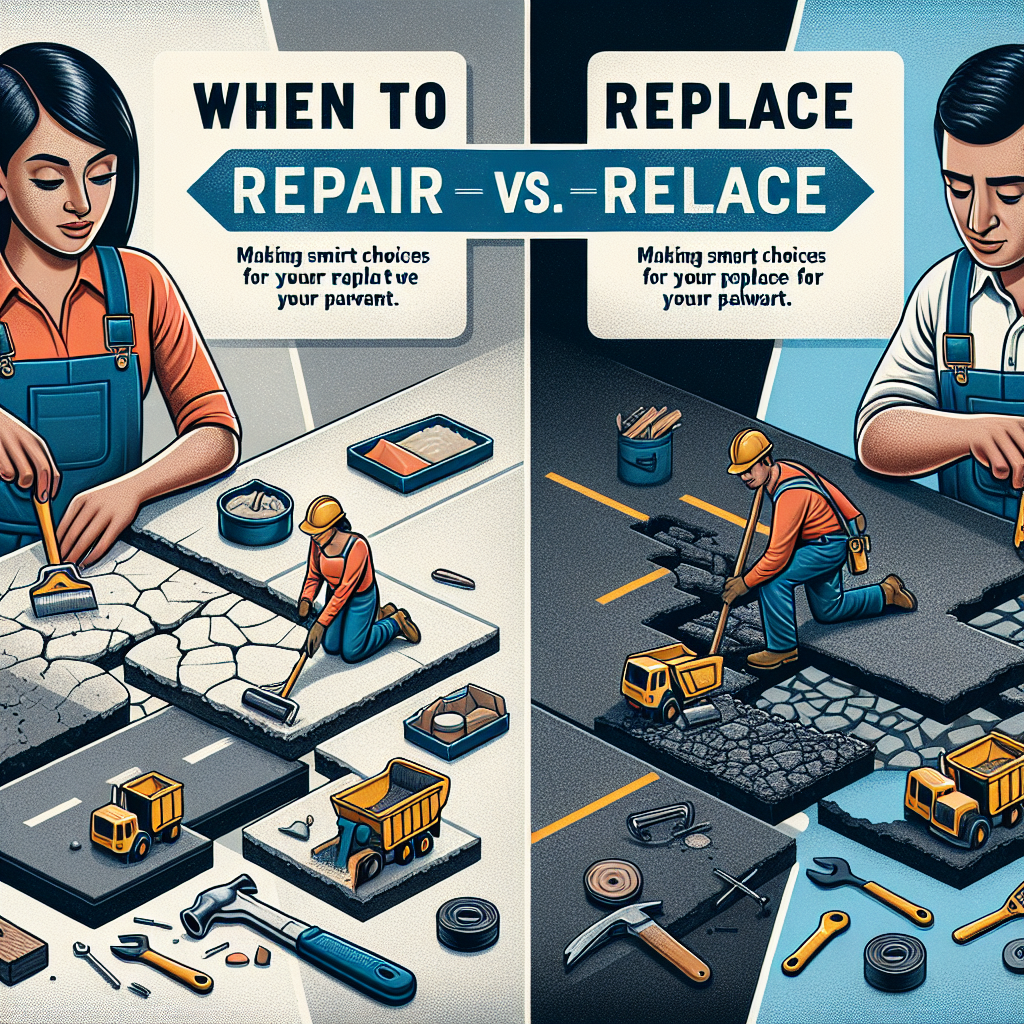Pavement maintenance is an essential aspect of property management, whether you own a home, a commercial building, or manage an industrial site. Over time, your pavement will inevitably show signs of wear and tear, raising the critical question: should you repair it or replace it entirely? This article will help you navigate these choices, ensuring that you make informed and cost-effective decisions for your pavement needs.
Understanding Pavement Deterioration
Pavement deterioration can manifest in various forms, including cracks, potholes, and surface flaking. Understanding the underlying causes of these issues is key to making an informed decision. Several factors can contribute to pavement damage:
- Weather Conditions: Extreme temperatures, heavy rainfall, and freeze-thaw cycles can weaken your pavement.
- Traffic Load: Heavy vehicles and constant traffic can lead to structural issues.
- Lack of Maintenance: Regular inspections and preventive measures are crucial in extending the life of your pavement.
Recognizing these factors can help you determine whether your pavement requires a simple repair or a full replacement.
Assessing the Damage: Should You Repair or Replace?
Before deciding on repair or replacement, it’s essential to assess the extent of the damage. Here are some indicators to help you:
Minor Damage – Repair May Be Enough
If your pavement shows minor signs of wear, such as small cracks or surface discoloration, a repair may be sufficient. Here are some scenarios where repairs are a practical choice:
- Cracks Less Than ¼ Inch Wide: These can typically be filled with sealant to prevent water infiltration and further damage.
- Potholes in Isolated Areas: If the damage is localized and limited to a small number of potholes, patching may restore the pavement’s integrity without further expense.
- Surface Distress: For minor surface flaking or degradation, resurfacing or sealcoating can provide a protective layer without removing the existing pavement.
Major Damage – Replacement May Be Necessary
On the other hand, substantial damage may indicate that it’s time for a complete replacement. Consider these signs:
- Cracks More Than ½ Inch Wide: Widespread large cracks signal that the structural integrity of the pavement has been compromised.
- Potholes That Recur: If patching potholes becomes a routine job, it may be cost-effective to replace the pavement altogether.
- Significant Surface Wear: When the pavement surface is more than 50% damaged or the underlying structure is compromised, replacement is likely the best option.
Cost Considerations
When deciding whether to repair or replace, consider your budget. Repairs are generally more affordable in the short term, but they may lead to recurring costs if the underlying issues are not addressed. Conversely, while replacement is a larger upfront investment, it can lead to long-term savings through reduced maintenance costs and enhanced property value.
Investing in Quality
If you opt for a replacement, selecting quality materials and professional installation is crucial. Investing in durable pavement can save you headaches and expenses down the road.
The Role of Preventive Maintenance
Regardless of whether you choose to repair or replace, preventive maintenance is key to prolonging the life of your pavement. Here are some tips:
- Regular Inspections: Schedule routine inspections to identify minor issues before they escalate into major problems.
- Sealcoating: Applying a sealant every few years can protect your pavement from water damage and UV rays.
- Prompt Repairs: Addressing minor issues as they arise can prevent them from developing into significant problems.
Conclusion: Making Smart Choices for Your Pavement
Navigating the decision between repairing and replacing your pavement doesn’t have to be daunting. By understanding the extent of the damage, weighing cost considerations, and investing in preventive maintenance, you can make smart choices that serve your property well in the long run.
Remember that every pavement is unique, and consulting with a professional can provide tailored insights specific to your situation. Taking the time to assess, plan, and maintain your pavement effectively will ensure that it remains a valuable asset for years to come.
Utilizing this guidance can empower you to make informed decisions while keeping your pavement safe, functional, and aesthetically pleasing.


